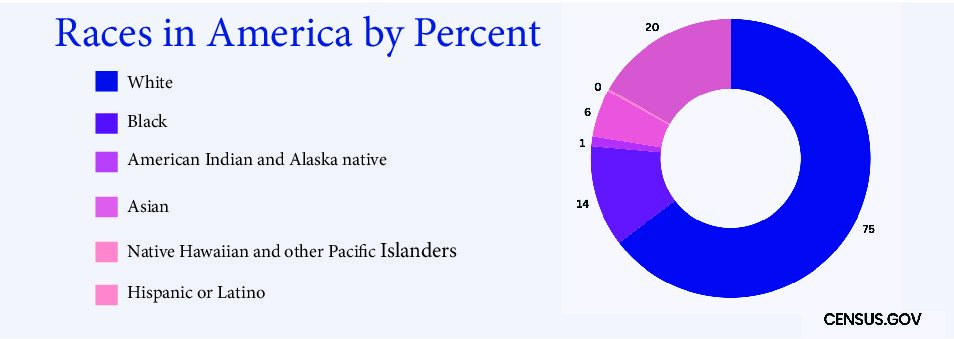
photo credit: Sophie Rogers
A teenage girl just started going to college. She doesn’t have a lot of money but is in need of traditional toiletries like shampoo, conditioner and body wash. When she gets to the store, the items that she needs are so expensive that she was unable to buy other necessities like the food she was also there to get.
Menstrual products are one example that fall into the category of “pink tax” purchases; the pink tax refers to women paying more for the same or similar products and services than men. Pink tax costs women an average of $1,300 per year according to Bankrate’s estimate.
Many states price women’s hygiene items as luxury items so they are more expensive, according to Kiplinger.
“Pink taxes affect my life every day because of every female’s monthly menstrual cycle. We often have to buy new hygiene products, and with the pink tax we’re paying a lot more than we should,” the Donations Coordinator of I Support the Girls Club junior Saanvi Gulati said.
Products marketed to women are more expensive than the ones for men. The product could be made the exact same way and cost the exact same price to make, but since it is for a woman it is priced differently.
“Pink tax creates an unfair financial burden on people who buy those products. Why should someone have to pay more for a product just because it’s marketed toward women?” I Support the Girls Club Adviser and Spanish Teacher Alexandra Tony said.
Women’s products are on average 13 percent more expensive than male products that are similar. This can have a significant financial impact on women, families and society, according to Kirplinger.
“Pink taxes are harmful for our society. Females have to pay more for products and services that are necessary for their health and lifestyle,” Gulati said.
If pink tax was eliminated, then there is one more barrier eliminated pertaining to gender equality, according to CA.gov.
The personal items that women need would also be more affordable to them. They would have more money to spend elsewhere, and this would help the economy to grow then.
“I define a pink tax as an item or service that is marketed toward women that costs more than a similar item or service for men. I notice an increase in price on certain items including razors (for men vs for women), deodorant, shampoo, shaving cream, etc. Equalizing prices or just not marking items as ‘for women’ vs ‘for men’ would help people save money,” Tony said.
Pink tax is a more severe problem for countries that are economically developed. This means that with the absence of regulation, the gender gap could grow more. This can be prevented by regulations being placed on products that prevent pink tax, according to EPJ Data Science.
“A reduction of pink taxes would be really good for society. However, there would be backlash and controversy around the topic,” Gulati said.
This has turned into not just an economic issue but a political issue as well. Several states have passed laws attempting to limit pink tax. There have also been many attempts to pass a law relating to the elimination of pink tax at the federal level.
“I do think the ‘pink tax’ should be outlawed. However, I wouldn’t be surprised if companies found a loophole and used a different way to charge people more for similar items. Writing our lawmakers about reducing pink taxes would be helpful. Also, companies respond to public pressure, so young people should draw attention to unfair pricing via pink taxes on social media,” Tony said.
Many people can’t afford the basic products that they need for their personal hygiene, so agencies, such as Helping Women Period and Alliance for Period Supply, are helping to combat this problem by providing menstrual products for women who can’t afford them and fighting for the elimination of a pink tax.
One way that girls are fighting for the elimination of pink tax is by making menstrual products free in public bathrooms, including schools, parks, sports facilities and other public areas. Our school is working toward these goals in correlation with the I Support The Girls nonprofit organization.
Another issue targeting women is the lack of maternity leave for pregnant women in America. Currently in the United States, there are no solid regulations in place guaranteeing maternity leave; the only policy coming close is the Family and Medical Leave Act (FMLA), established in 1993.
Even though FMLA grants 12 weeks of protected, unpaid leave, 40 percent of women do not qualify for it because of the exceptions to FMLA policies (e.g. how long they have worked at a company, number of employees in a company), according to healthline.com. Most companies have their own individual policies that determine the length of the leave and whether it’s paid.
“It’s just truly based on the company, which can kind of be frustrating because every company or industry is different, and so some companies and industries give you more time and some give you less time,” Fifth Grade Teacher Megan Foster said.
Foster took a maternity leave at Oak Creek Elementary two years ago and will be taking another in the upcoming months.
In the United States, 25 percent of women return to work within just two weeks of giving birth, according to healthline.com. This gives women so little time to recover from childbirth and all the effects that it can have on their bodies.
“Going through birth is actually a pretty traumatic experience. Whether it’s a vaginal birth or a c-section, your body, for lack of a better term, is just wrecked going through that. Many women are still bleeding after that amount of time, and the physical strain on your body after just two weeks, that’s just unfathomable to me to return back to work,” Sociology Teacher Leslie Hosgood said.
Adding on to the huge physical stress that mothers need to recover from, mental health issues are becoming more and more common for new mothers. Conditions such as postpartum depression have a huge effect on mothers, and adding a professional workload on top of caring for a new baby can add even more stress to a new mother’s life.
“The sleep deprivation is just huge. Newborns generally do not sleep well because they are up constantly because they have to feed all the time. Just the mindset of somebody who is being deprived of sleep does not generally make them a good worker,” Hosgood said.
One of the biggest challenges for new parents is paying expenses surrounding their baby, as young children are expensive because of diapers, doctor appointments, formula, clothing and more. Even though this can be one of the most financially straining times of someone’s life, parents still are not guaranteed that they will be paid on their leave at all. This means they are potentially missing out on months’ worth of salaries that could be vital to supporting themselves and their new baby.
“Jobs that are more geared toward upper middle class type positions tend to offer more leave than minimum wage jobs, so there really is no protection for women who are kind of at the bottom of the social class ladder. Oftentimes, they will lose their jobs if they don’t show up for work. Even if it’s a baby, and babies get sick all the time, you have to take a lot of sick time,” Hosgood said. “It’s really complicated for everyone who is dealing with it, men and women, but it presents additional challenges for people who don’t have jobs that offer that sort of protection.”
Not only is the United States behind the international standard of 14 weeks of protected leave set by the International Labor Organization over 60 years ago, but also almost every other country in the world is ahead of the United States in their policies. According to justworks.com, countries in Europe such as Estonia, Greece and Poland get as much as 20 to 43 weeks of paid labor, whereas time taken off in the United States is not even guaranteed to be paid.
“Every developed country has some sort of leave that’s way more generous than we see here in the United States,” Hosgood said. “Other countries have been doing this for a long time, countries not as wealthy and well-resourced as the United States.”
Millions of mothers have been affected by their maternity leave as it often takes parents away from their child. In Olentangy Schools, teachers going on maternity leave are given eight weeks paid leave, but the paid leave comes out of the mother’s sick days. Employees can take up to 12 weeks, but the remaining four weeks are unpaid.
“It becomes really challenging because you have kids because you want to spend time with them, so when you’re not able to spend time with them, it’s kind of a bummer,” Hosgood said.
As if women in the workplace don’t have enough to deal with, they have one more issue to deal with: the wage gap. On average, women make $0.82 for every $1 that a man makes, according to NPR. Even in 2024, women have to fight for equal pay.
A common misconception is that the wage gap is based on discrimination against women, and while that can partly be the reason, there is more to it as women have to take breaks such as maternity leave.
“Some economists would say that the largest issue with the wage gap is that it
reduces women’s ability to have as much disposable income than men. This reduces their purchasing power in the economy, and it also reduces the amount of consumer spending and economic growth that could occur if they were paid the same as men,” AP Economics Teacher Kevin Haynes said.
“Other economists say that it doesn’t impact the economy at all because the wage gap is a natural occurrence due to women birthing children, leaving the workforce for at-home childcare, working fewer annual hours than men and working in different career fields than men.”
A good example of this is the motherhood penalty. When women have a baby and go on
maternity leave, this negatively affects their income. Even after they come back, their incomes never recover.
“The gap starts to really get wider when workers are in their 30s generally because at that point men and women have babies, and there’s this thing called the motherhood penalty. So, generally before babies are born, women make about the same amount of money. However, when the babies are born women’s income generally drops pretty quickly but then never really catches up to men’s,” Sociology Teacher Leslie Hosgood said.
“For women without children, their incomes actually outpace men, but about 86 percent of women by the time they get to their 40s are mothers.”
While lots of career fields are affected by the wage gap, it is most prominent in fields such as technology or finance. In these fields, it is very competitive, and people have to work to get equal incomes.
An example of this is personal finance advisers. Men in this career earn 58 percent more than their female coworkers, earning an average yearly salary of $103,220 compared to $65,208, according to Forbes.
There is only one career where women and men have equal incomes: teaching assistants. Both men and women in this career have an average yearly salary of $34,424.
“Finance, insurance and technology are said to have the largest wage disparities between men and women. These fields are often very competitive, where wages are not transparent. Research has shown that women are much less assertive when it comes to negotiating wages,” Haynes said.
The wage gap has been around for a long time, since the Industrial Revolution. While the gap continues, more and more efforts are being made each year to try and close the gap.
An example of this is the U.S. Women’s soccer team. According to the New York Times, after a lawsuit filed by the U.S. women’s national team, several former and current players will share $24 million from U.S soccer. The settlement not only included money but also a promise to equalize pay between the womens and mens team.
“Work has been done since the beginning of the Industrial Revolution in order to equalize pay through women’s movements and legislation. Today, more efforts are being made to provide education and career counseling for women in traditionally male-dominated fields and to create mentorship and sponsorship programs to help support women in advancing their careers,” Haynes said.
One specific example of attempts made to close the wage gap is the Equal Rights Amendment. According to Britannica, the Equal Rights Amendment is a proposed amendment that invalidates many of the laws that discriminate against women. In simple terms, it is said that gender should not determine legal rights for men and women.
“There’s this amendment that was proposed to the Constitution called the equal
rights amendment which was to try to guarantee equal rights for women in the Constitution. There have been attempts to pass it, but it’s never passed,” Hosgood said.
Currently, the topic of abortion and its regulation, legality and access is ever-present in the current media.
In 2021, there were 11.6 abortions in the United States per 1,000 women aged 15 to 44, according to the CDC. For decades, few political topics have been as polarizing as reproductive rights under the Constitution.
On June 22, 2022, the historic Constitutional right of abortion was overturned. The decision in Dobb’s v. Jackson Women’s Health Organization eliminated this right, resulting in more than 20 states limiting access to the procedure, according to CNN.
“As a history teacher, we talk about women’s rights throughout history in many different ways, and this idea of choice, whether we’re talking about when birth control started to become more widespread or Roe versus Wade, the court case that essentially legalized abortion across the country, these rights relate back to women’s position in society and the fact that biologically, women are the ones who can carry babies and give birth to babies. This has affected women’s status and in a lot of different ways socially, politically and economically,” Sociology Teacher Leslie Hosgood, who has a degree in women’s studies, said.
Abortion is a central issue in women’s rights because it impacts a woman’s bodily autonomy, and questions society’s role in protecting the beginning of life. The debate surrounding abortion is complex because it requires legislation that addresses individual rights and values of society.
“If I were to summarize this in one quote, it’s that legislators, people making our laws, can be very well-intentioned about their goals in some of the legislation that they pass. However, pregnancy and childbirth are incredibly complicated,” Hosgood said.
One of the main arguments for abortion rights is that it is an essential part of healthcare. Advocates argue that restricting access to the procedure can jeopardize women’s health and well-being, making it a very important part of reproductive care.
“Women’s health benefits from having access to abortion. Some pregnancies, if not terminated, could result in the mother’s death,” a senior who wished to remain anonymous said. “So, having access to abortions is vital for women.”
This decision to overturn Roe v. Wade is extremely impactful when it comes to women’s healthcare; it led to millions of people living in Southern and Midwestern states being forced to travel if an abortion is necessary. Logistical and financial issues usually result in abortion being impossible to access for women living in restricted states.
“In some states, women have to be life flighted out to get care in another state. So, it’s a really complicated issue, but the simplest way to understand is that medically a lot of things happen. When you’re trying to legislate medical procedures, there are so many gray areas that make it very hard to have everybody get the care that they need,” Hosgood said.
The rates of mothers and newborn babies dying during pregnancy or the birthing process is higher in states that restrict abortion. According to The Commonwealth Fund, In 2020, maternal death rates were 62 percent higher in restricted states than states with full access.
“My ethical views about abortion are that it is immoral to deny access to healthcare. There are so many circumstances where abortion is necessary. Having an abortion is a difficult decision to make, but it should be the woman’s decision, no one else’s,” the anonymous senior said.
Several argue that abortion should be limited to cases of rape or incest, but that would be difficult to implement because it requires complex legal processes. This restriction could force women to prove trauma, which complicates an already sensitive decision.
”A common position that many Americans have is that they only want abortion to be available in certain circumstances, so in the case of rape or incest or life of the mother, but the complexity of that though is that sometimes that’s really hard to determine. Life of the mother is a different description based on every doctor,” Hosgood said.
As the debate over abortion rights continues, reaching a consensus on laws will require balancing personal freedoms with societal responsibilities. Moving forward, open dialogue that considers both women’s rights and moral values will be key.
Women across the world face similar issues, and in America there are many working to increase the gender equality people face on a daily basis. To assist with this process, you can always find an organization that works for your views, and support them.


